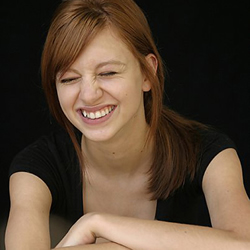More about Rest on the Flight into Egypt
- All
- Info
- Shop

Sr. Editor
Rest on the Flight into Egypt shows an infamous pit stop made by Joseph and the Virgin Mary.
You’re probably going to run into several versions of the Holy family fleeing into Egypt in the history of art, beginning in the latter half of the 14th century. By the time Caravaggio rolled around, the popularity of the theme had spread from Northern Europe to Italy. The figures in these paintings are Joseph, Mary and Jesus, who are on their way to Egypt thanks to a dream Joseph had of an angel urging them to flee, as King Herod had it out for the baby messiah. We should note that, technically, this scene doesn't actually appear in the bible, but became embellished throughout the years via early Christian and later medieval apocryphal texts. The three figures are normally depicted in some sort of landscape, as the trend of painting the resting family gained steam in tandem with the landscape genre. Rembrandt, Orazio Gentileschi, and Jan Brueghel the Elder are some of the other famous artists who have put their spin on it.
Caravaggio's version stands out in part due to the composition, with an angel playing a viol standing in front of the family, creating a solid mass of figures without much breathing room. The inclusion of the angel in itself is unique, as generally the family was depicted alone. The white-clothed angel stands out against the dark greens and browns of the landscape, and the undulating folds in the fabric of his robe carry your eye across the painting to Mary and the infant Jesus, to Joseph, and then back again. The overall effect is soft and intimate, like Mary cradling her child in the crook of her neck - a quiet moment of respite. In 1983 the musical score Joseph is holding out for the angel was identified as a song called “Quam pulchra es” (“How beautiful you are”), composed by Flemish Noel Bauldewijn, who took the words from the Song of Songs (a surprisingly erotic book from the Old Testament that celebrates sexual love), and put them to music.
It has been suggested that the angel is a stand-in for the artist himself, as his position mimics that of a painter at his easel. Scholars have also noted the similarity between his angel and the one in Annibale Carracci's Judgment of Hercules, which debuted before Rest on the Flight to Egypt to much acclaim (and now lives at the National Museum of Capodimonte). This is interesting because Caravaggio and Carracci had a "bitter rivalry," often competing for the same commissions, and quite literally going head to head a few years later when both were hired to make paintings for the Cerasi Chapel of Santa Maria del Popolo. So it's possible Caravaggio's "appropriation" of this angel figure his way of saying, "Anything you can do, I can do better."
The date of this work is still disputed, as is the identity of the person who commissioned it. In a book about the artist's life, Caravaggio's friend Giulio Mancini wrote that it was a Monsignor Petragnani with whom Caravaggio was staying in the late 1590s, but the dates don't quite add up. It's since been agreed upon by several historians that this was more likely a commission for the Cardinal Del Monte, who was a great patron of Caravaggio's. He was rumored to be homosexual and may have appreciated the eroticism of the young men (boys, really) in the work of Caravaggio, who historians have speculated was gay since the 1970s (though this fact is also up for scholarly debate). One author writes that Del Monte's commissions, such as Bacchus, are replete with "full-lipped, languorous boys ... who seem to solicit the onlooker with their offers of fruit, wine, flowers—and themselves." While not as erotically charged as some of his other paintings, the young male angel is showing a lot of skin...especially to Joseph.
To further sully your image of this pious scene: Caravaggio experts believe the figure of Mary in this work was modeled after Anna Bianchini, a prostitute who worked for him (and who they also think makes an appearance as Mary in his Death of a Virgin). While we can't say for sure, Caravaggio does seem like the kind of guy who would get a kick out of casting a sex worker as the Virgin Mary. Dude just couldn't resist a scandal.
Sources
- Bray, Christopher, “Caravaggio: a life sacred and profane, by Andrew Graham-Dixon,” Independent, July 4, 2010. Accessed April 22, 2020. https://www.independent.co.uk/arts-entertainment/books/reviews/caravagg…
- Ebert-Schifferer, Sybille, Caravaggio: the Artist and his Work. Getty Publications, 2012.
- Fried, Michael, The Moment of Caravaggio. Princeton: Princeton University Press, 2010.
- Giorgi, Rosa, Saints in Art. Los Angeles: Getty Publications, 2003.
- Maria Wiering, “Mother and mystery: a new exhibit celebrates Mary,” American: the Jesuit Review, December 23, 2014. Accessed April 22, 2020. https://www.americamagazine.org/issue/mother-and-mystery
- O’Kane, Martin, Borders, Boundaries and the Bible. London: Sheffield Academic Press, 2002.
- Abraham, Simon. "Caravaggio’s Rest on the Flight into Egypt (c.1597)" Every Painter Paints Himself, https://www.everypainterpaintshimself.com/article/caravaggios_rest_on_t… Accessed March 12, 2021
- Graham-Dixon, Andrew. Caravaggio: A Life Sacred and Profane. United States: W. W. Norton, 2011, pp.143.
- Langdon, Helen. Caravaggio: A Life. New York: Farrar, Straus and Giroux, 1999.
- Crompton, Louis. Homosexuality and Civilization (Harvard, 2006) p.288
Featured Content
Here is what Wikipedia says about Rest on the Flight into Egypt (Caravaggio)
Rest on the Flight into Egypt (c. 1597 creation) is a painting by the Italian Baroque master Michelangelo Merisi da Caravaggio, in the Doria Pamphilj Gallery, Rome. The Rest on the Flight into Egypt, like the Flight into Egypt, was a popular subject in art, but Caravaggio's composition, with an angel playing the viol to the Holy Family, is unusual.
Check out the full Wikipedia article about Rest on the Flight into Egypt (Caravaggio)
















